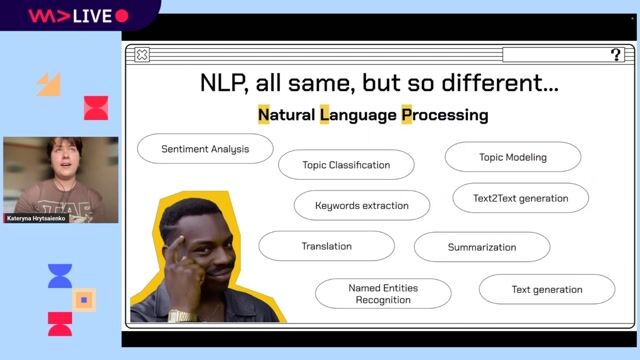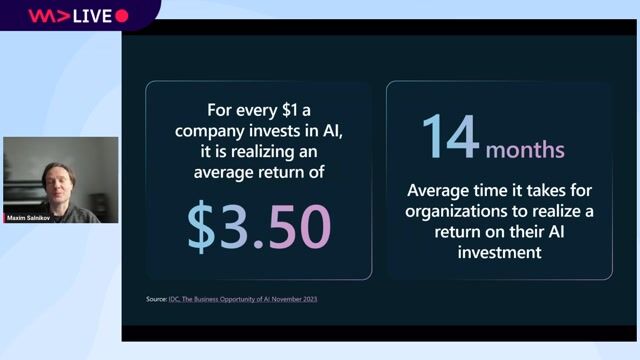Marek Suppa
Serverless deployment of (large) NLP models
#1about 9 minutes
Exploring practical NLP applications at Slido
Several NLP-powered features are used to enhance user experience, including keyphrase extraction, sentiment analysis, and similar question detection.
#2about 4 minutes
Choosing serverless for ML model deployment
Serverless was chosen for its ease of deployment and minimal maintenance, but it introduces challenges like cold starts and strict package size limits.
#3about 8 minutes
Shrinking large BERT models for sentiment analysis
Knowledge distillation is used to train smaller, faster models like TinyBERT from a large, fine-tuned BERT base model without significant performance loss.
#4about 8 minutes
Building an efficient similar question detection model
Sentence-BERT (SBERT) provides an efficient alternative to standard BERT for semantic similarity, and knowledge distillation helps create smaller, deployable versions.
#5about 3 minutes
Using ONNX Runtime for lightweight model inference
The large PyTorch library is replaced with the much smaller ONNX Runtime to fit the model and its dependencies within AWS Lambda's package size limits.
#6about 3 minutes
Analyzing serverless ML performance and cost-effectiveness
Increasing allocated RAM for a Lambda function improves inference speed, potentially making serverless more cost-effective than a dedicated server for uneven workloads.
#7about 3 minutes
Key takeaways for deploying NLP models serverlessly
Successful serverless deployment of large NLP models requires aggressive model size reduction, lightweight inference libraries, and an understanding of the platform's limitations.
Related jobs
Jobs that call for the skills explored in this talk.
Featured Partners
Related Videos
 34:21
34:21DevOps for AI: running LLMs in production with Kubernetes and KubeFlow
Aarno Aukia
 39:58
39:58Leverage Cloud Computing Benefits with Serverless Multi-Cloud ML
Linda Mohamed
 52:37
52:37Multilingual NLP pipeline up and running from scratch
Kateryna Hrytsaienko
 27:23
27:23From ML to LLM: On-device AI in the Browser
Nico Martin
 47:19
47:19The state of MLOps - machine learning in production at enterprise scale
Bas Geerdink
 41:45
41:45From Traction to Production: Maturing your LLMOps step by step
Maxim Salnikov
 47:28
47:28What do language models really learn
Tanmay Bakshi
 46:31
46:31Optimizing your AI/ML workloads for sustainability
Sohan Maheshwar
From learning to earning
Jobs that call for the skills explored in this talk.
Machine Learning Engineer
Speechmatics
Charing Cross, United Kingdom
Remote
€39K
Machine Learning
Speech Recognition
AI/ Machine Learning Engineer NLP / LLM - Contract
Involved Solutions LTD.
Manchester, United Kingdom
Remote
€117-130K
Machine Learning
Natural Language Processing
ML/DevOps Engineer at dynamic AI/ Computer Vision company
Nomitri
Berlin, Germany
C++
Bash
Azure
DevOps
Python
+12
Machine Learning (IA/ML) + DevOps (MLOps)
Alten
Municipality of Madrid, Spain
Remote
Java
DevOps
Python
Kubernetes
+3
Security-by-Design for Trustworthy Machine Learning Pipelines
Association Bernard Gregory
Machine Learning
Continuous Delivery
Senior DevOps Engineer - Machine Learning
Lonza, Inc.
Cambridge, United Kingdom
Senior
GIT
Azure
Keras
DevOps
Python
+4
Machine Learning Evangelist @AI Startup
Lightly
Zürich, Switzerland
Intermediate
Python
PyTorch
TensorFlow
Computer Vision
Machine Learning


